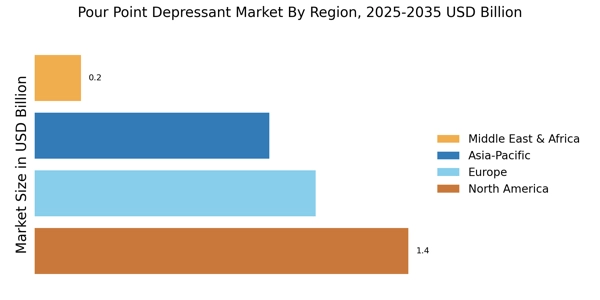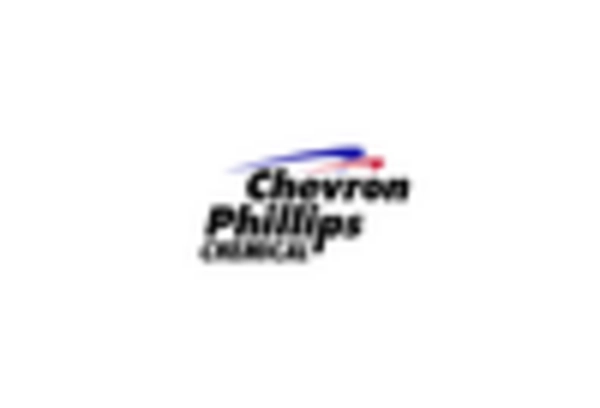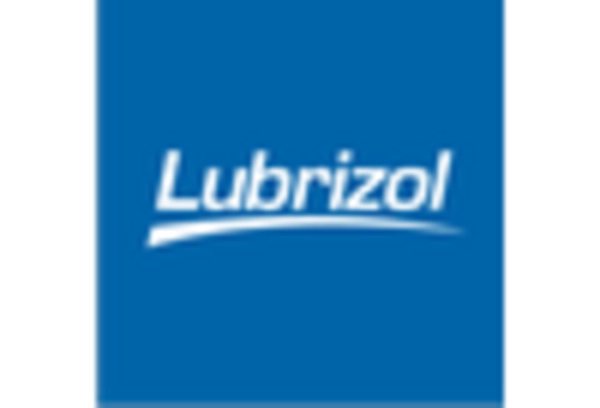Technological Innovations
Technological advancements play a crucial role in shaping the Pour Point Depressant Market. Innovations in chemical engineering and formulation techniques have led to the development of more effective pour point depressants. These advancements enable the production of additives that can operate efficiently at lower temperatures, thereby enhancing the performance of fuels and lubricants. The introduction of advanced testing methods allows for better evaluation of pour point depressants, ensuring that they meet the evolving demands of various industries. As a result, the market is witnessing a surge in the adoption of high-performance additives that can improve fluidity and reduce energy consumption. This technological evolution not only enhances product efficacy but also contributes to the overall growth of the Pour Point Depressant Market.
Sustainability Initiatives
The Pour Point Depressant Market is increasingly influenced by sustainability initiatives. As environmental regulations tighten, industries are compelled to adopt eco-friendly practices. This shift is evident in the formulation of pour point depressants that minimize environmental impact. Companies are investing in research to develop biodegradable and non-toxic additives, which not only comply with regulations but also appeal to environmentally conscious consumers. The market for these sustainable products is projected to grow, as industries seek to enhance their green credentials. Furthermore, the demand for sustainable lubricants is expected to rise, driving the need for effective pour point depressants that can perform under stringent environmental standards. This trend indicates a significant transformation in the Pour Point Depressant Market, as manufacturers align their products with sustainability goals.
Rising Demand in Oil and Gas
The oil and gas sector is a significant driver of the Pour Point Depressant Market. As exploration and production activities expand, the need for effective pour point depressants becomes increasingly critical. These additives are essential for maintaining fluidity in crude oil and refined products, particularly in colder climates where wax formation can impede flow. The market for pour point depressants is projected to grow in tandem with the oil and gas industry's recovery and expansion. According to industry reports, the demand for these additives is expected to increase as companies seek to optimize production efficiency and reduce operational costs. This trend underscores the vital role that pour point depressants play in ensuring the smooth operation of oil and gas processes.
Regulatory Compliance and Standards
Regulatory compliance is a significant factor influencing the Pour Point Depressant Market. As governments implement stricter regulations regarding chemical additives, manufacturers are compelled to ensure that their products meet these standards. This compliance not only affects the formulation of pour point depressants but also drives innovation in the industry. Companies are investing in research and development to create additives that are not only effective but also compliant with environmental and safety regulations. The increasing focus on regulatory standards is likely to shape the future of the market, as businesses strive to align their products with legal requirements. This trend suggests that the Pour Point Depressant Market will continue to evolve, adapting to the changing landscape of regulatory frameworks.
Increased Application in Automotive Sector
The automotive sector is emerging as a key driver for the Pour Point Depressant Market. With the growing emphasis on fuel efficiency and performance, manufacturers are increasingly incorporating pour point depressants into engine oils and lubricants. These additives help to lower the pour point of oils, ensuring optimal flow and performance in various temperature conditions. As automotive technologies evolve, the demand for high-performance lubricants is expected to rise, further propelling the need for effective pour point depressants. Additionally, the shift towards electric vehicles may also influence the market, as new formulations are developed to meet the specific requirements of electric drivetrains. This evolving landscape indicates a dynamic future for the Pour Point Depressant Market within the automotive sector.


















Leave a Comment